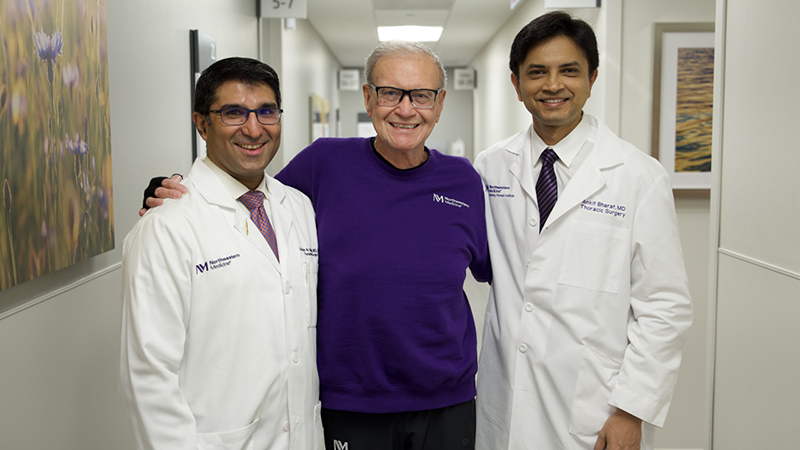A Golfer Plays Through Prostate Cancer Treatment
Proton Radiation Therapy in the Morning, Tee Time in the Afternoon
Updated March 2024
Sidney Strong is a man of many talents. He is a bass guitarist and performed with several R&B bands in Chicago, Illinois, starting when he was 16. He taught music in Chicago Public Schools for years and later applied his teaching skills in the corporate world as a technical trainer. Most recently, he became a golf instructor. Now enjoying retirement and the game of golf, Sidney plays with friends as often as he can.
One thing he wasn't expecting in retirement was a prostate cancer diagnosis. Sidney was at his primary care physician's office for an annual checkup, including a prostate-specific antigen (PSA) test. The test came back with an elevated level of PSA in his blood. His urologist ordered a biopsy, which confirmed Sidney had stage 2C prostate cancer.
Finding a Treatment Plan
Sidney's urologist recommended surgery to remove the cancer, but Sidney was reluctant. "I've never really had major surgery. So that was one of the last things I wanted to do," he says.
Sidney did some research and found a video of a radiation oncologist at the Northwestern Medicine Proton Center in Warrenville, Illinois, talking about non-invasive proton radiation therapy as a way to treat prostate cancer.
Sidney, who lives in Oak Park, Illinois, said he was pleasantly surprised to find that the only proton center in Illinois was so close to him. He scheduled a consultation. After reviewing Sidney's medical tests and scans, the radiation oncologist let Sidney know he was a good candidate for proton radiation therapy.
The proton center care team recommended that Sidney have five weeks of daily proton radiation treatment. Small markers were placed in Sidney's prostate to help guide treatment and placed a gel spacer between the prostate and rectum to protect the rectum. Sidney's radiation oncologist also recommended hormone therapy to help treat the prostate cancer.
"Mr. Strong was an excellent candidate for proton beam therapy because the prostate cancer was localized, and proton beam therapy gives precise treatment to the prostate with a minimal dose to surrounding health tissue and organs," says the radiation oncologist at the Northwestern Medicine Proton Center.
Sidney started hormone therapy shortly after the consultation. "I think I had one or two hot flashes from the hormones, but no other side effects," says Sidney.
Then, Sidney started his proton treatment in the middle of receiving six months of hormone therapy.
"I drove myself every day," says Sidney about his commute to and from the Proton Center. "I didn't have any pain. There was no discomfort. It was just a regular day."
When possible, Sidney scheduled his proton radiation appointments in the morning so he could be out on the golf course in the afternoon. He says one of his golfing partners was also going through prostate cancer treatment and they both made their afternoon tee times.
Today, Sidney is cancer-free and busy with golf lessons, playing the game whenever he can. His golf friends are five to 10 years younger than him, but he can hold his own.
"It usually turns out to be a one- or two-stroke difference in our games. Sometimes they get me and lots of times, I get them," says Sidney.




